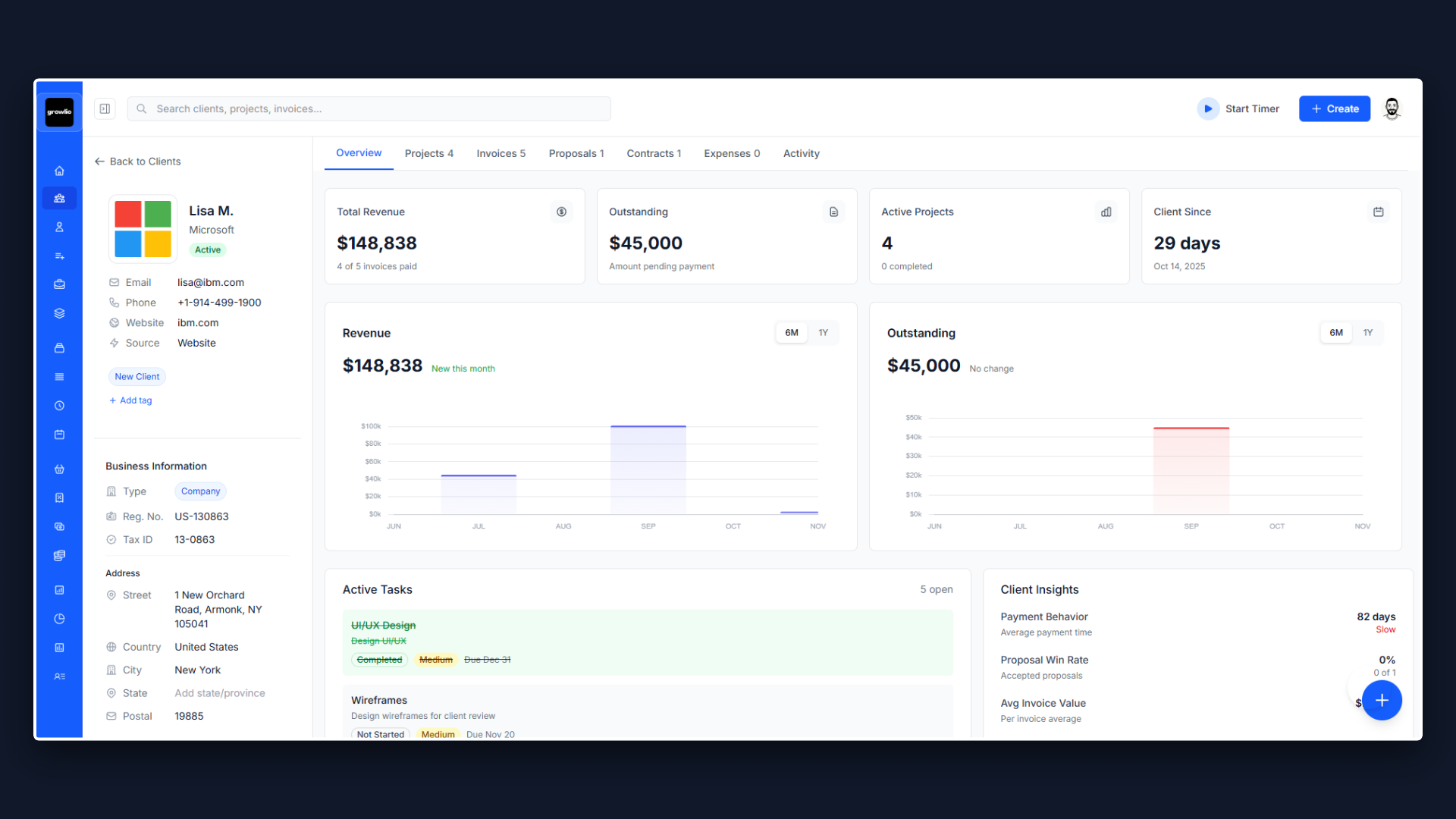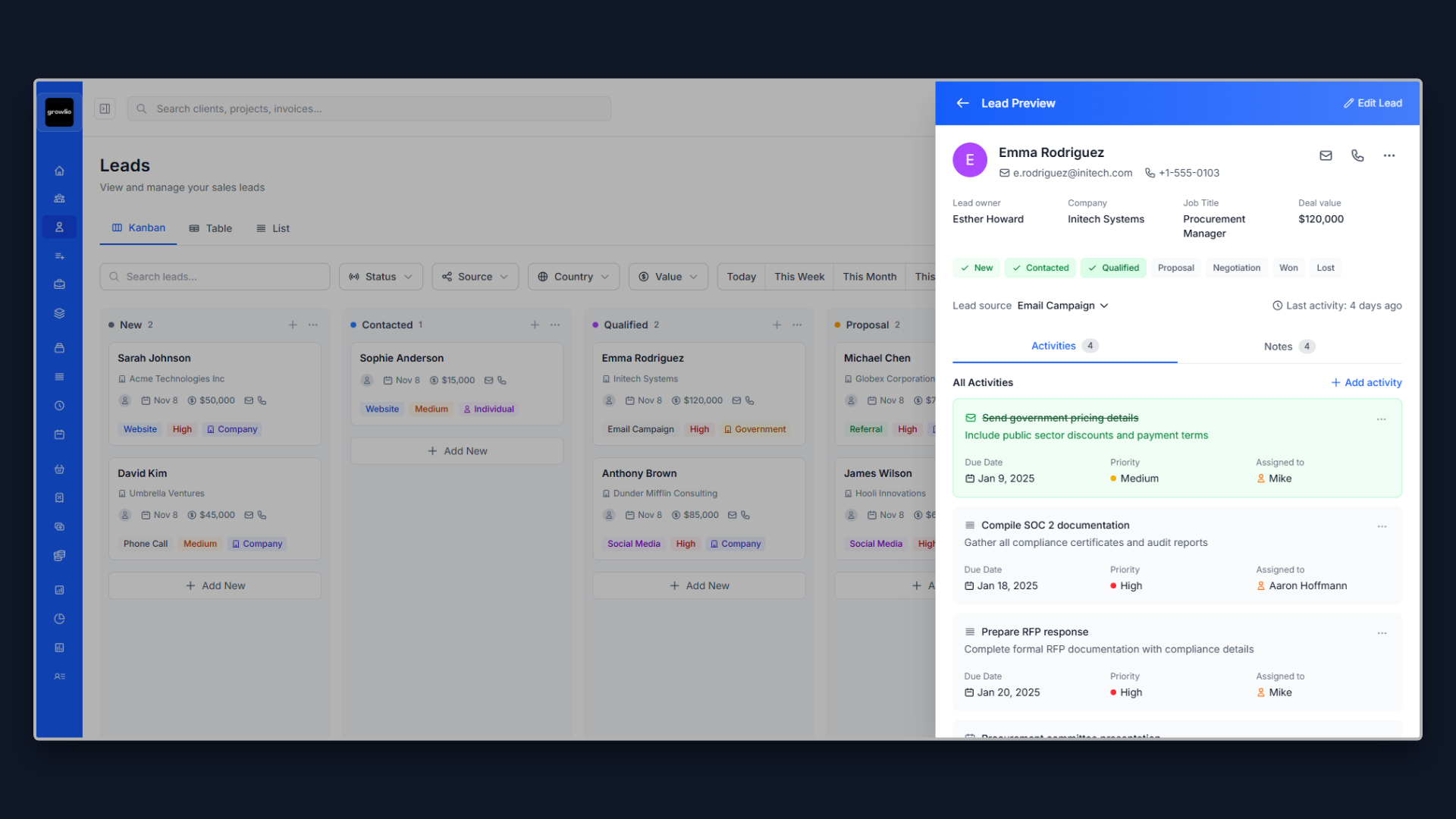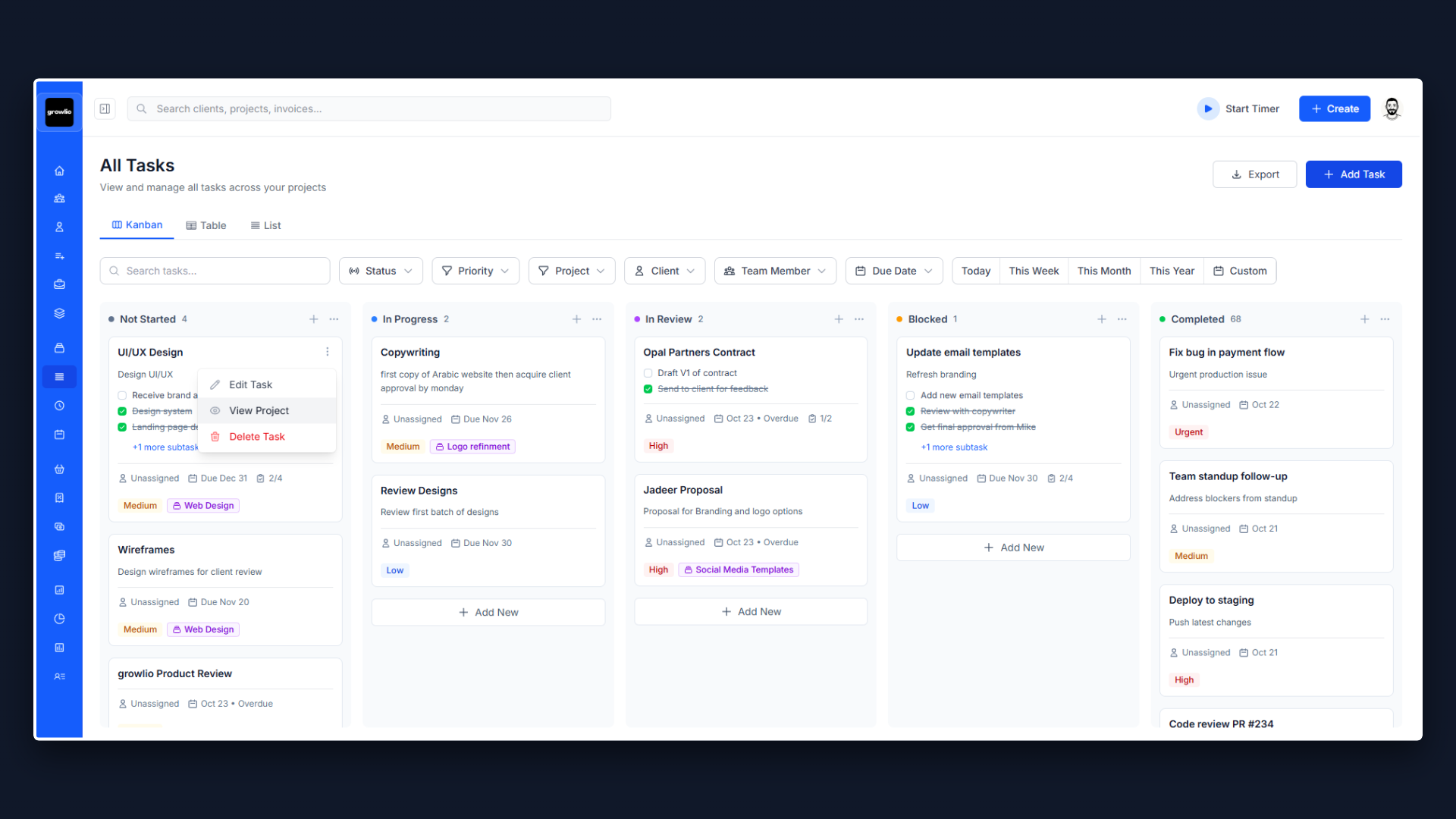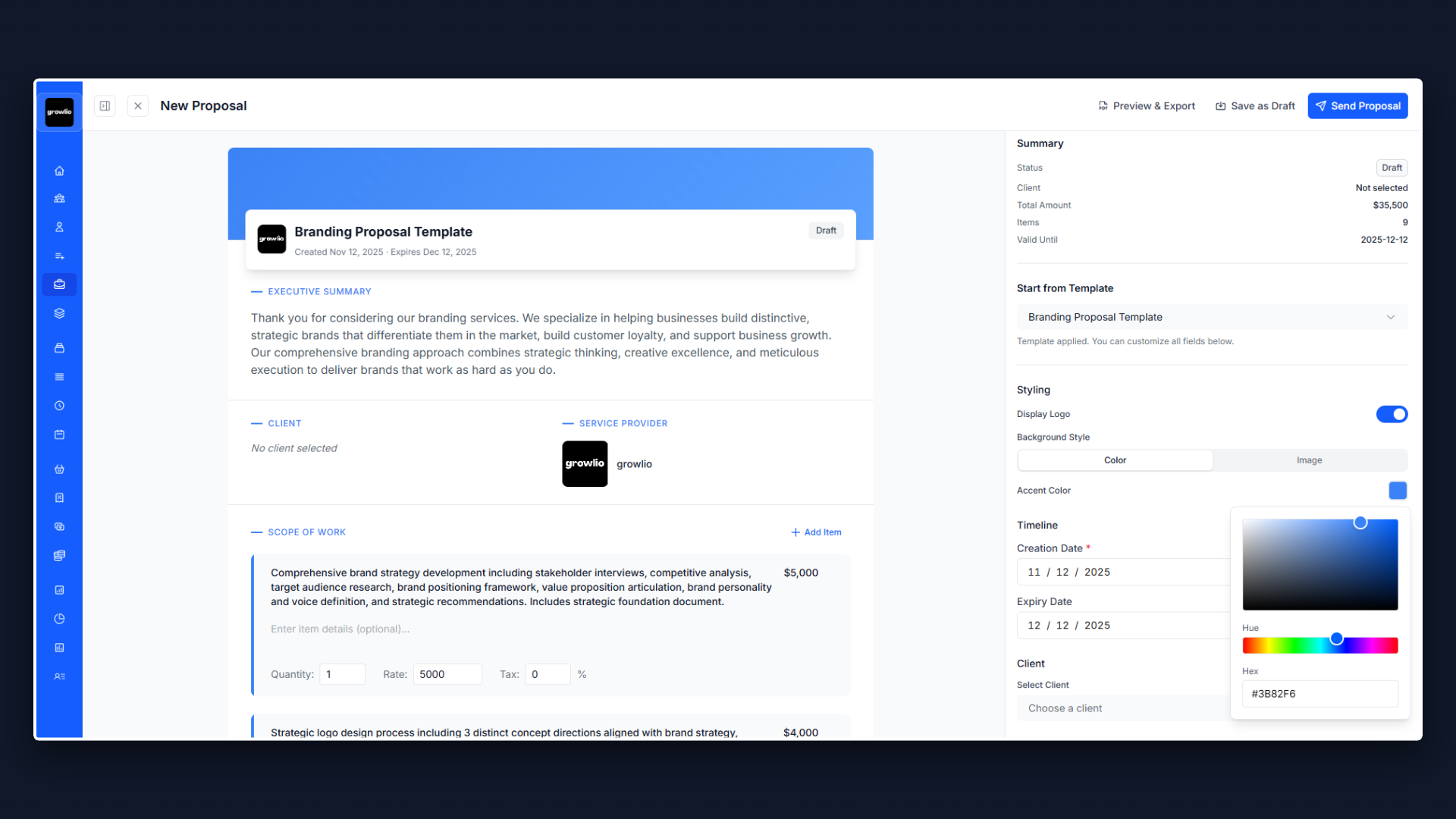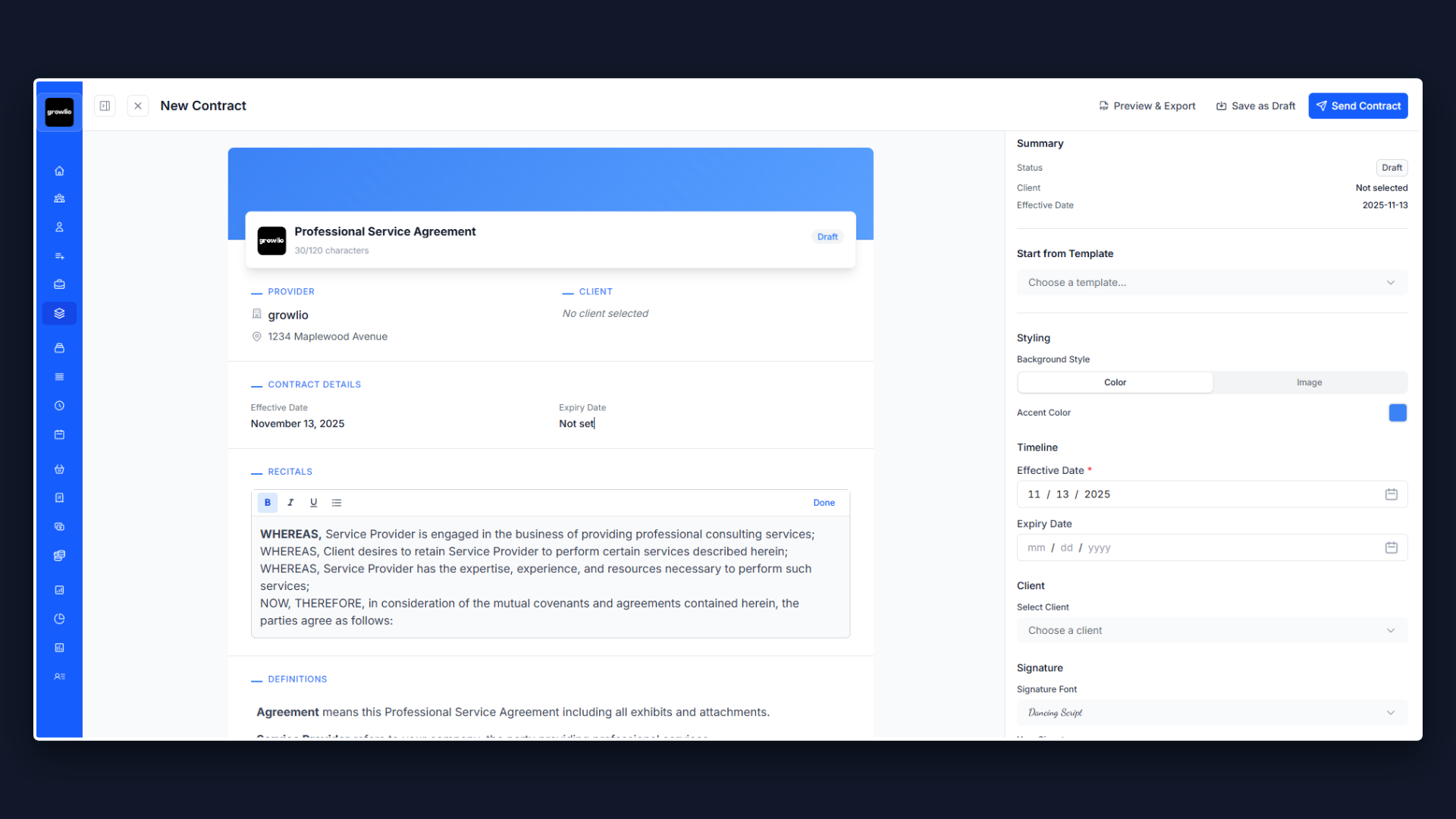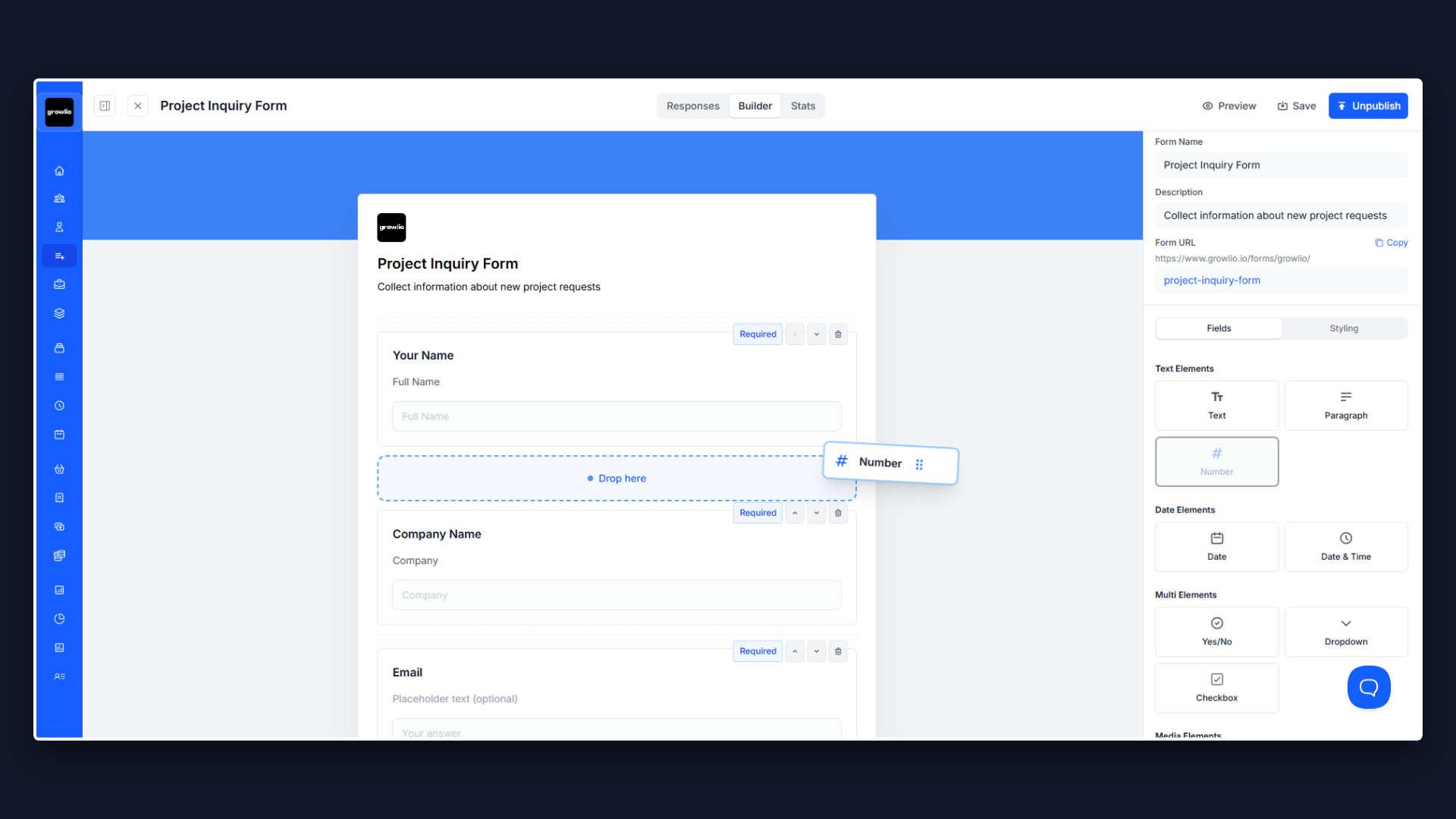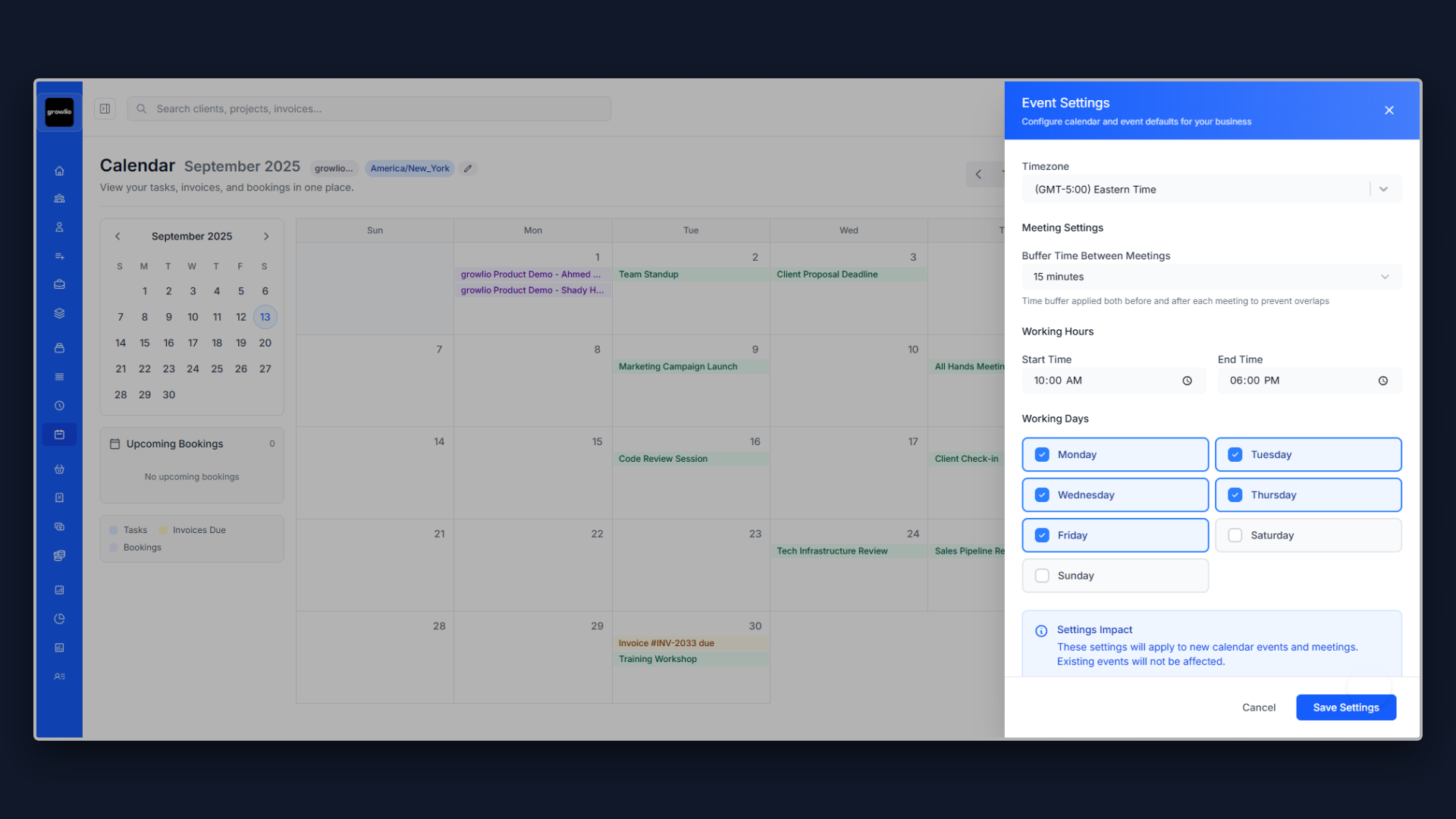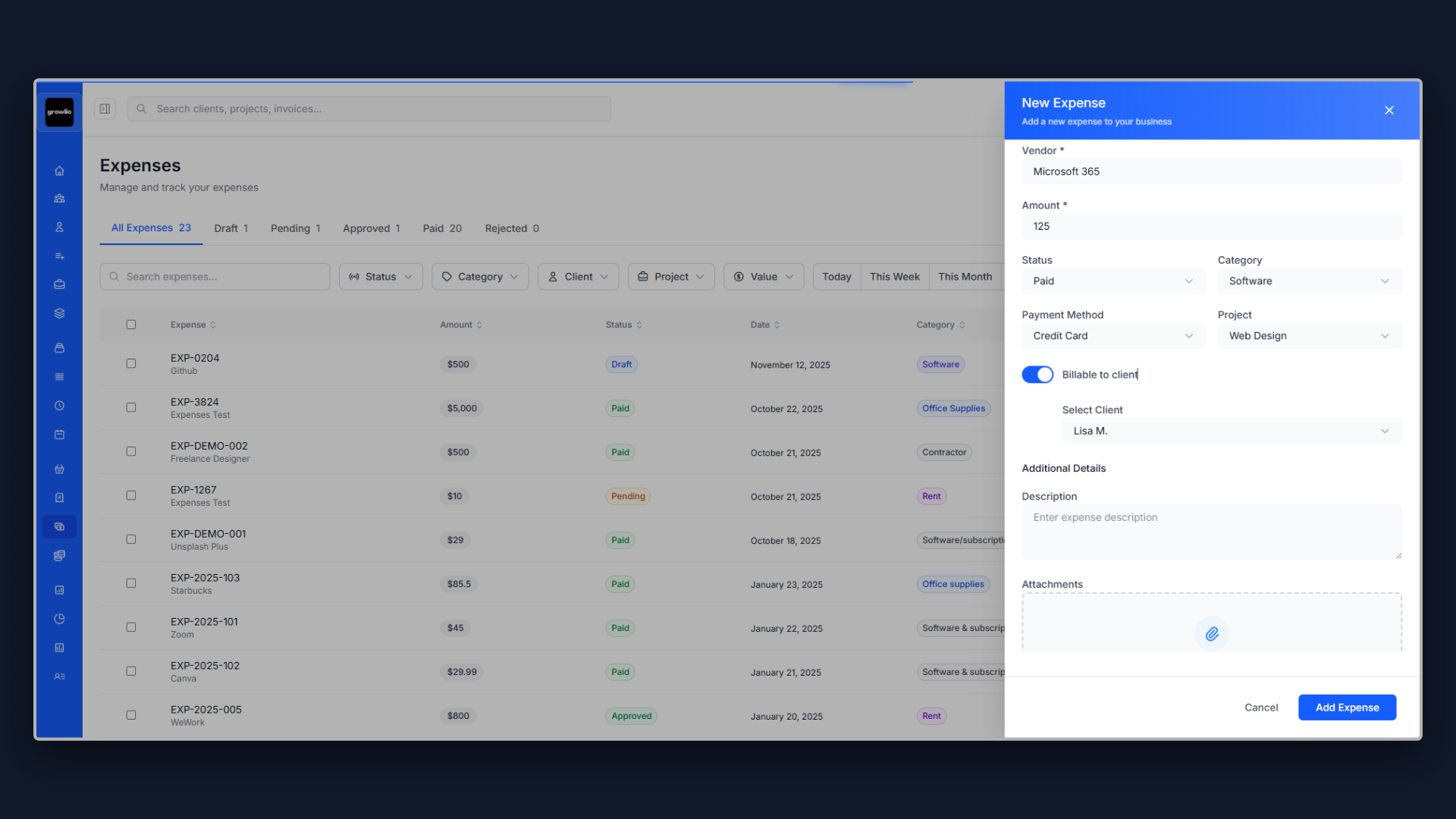Why Your Consulting Proposal Is Your Strategy in Action
In management consulting, you're selling something intangible: your thinking, your frameworks, and your ability to solve complex business problems. Before a CEO hands you access to their organization, trusts you with strategic decisions, or invests six or seven figures in your services, they need proof you can deliver transformation, not just analysis.
The management consulting industry generates over $250 billion annually in the U.S. alone, with companies increasingly relying on external expertise for strategic planning, operational improvement, digital transformation, and organizational change. Yet the difference between consultants charging $5,000 per project and those commanding $500,000+ engagements often comes down to how they present their value in proposals.
Your consulting proposal is simultaneously a diagnostic tool, a strategic framework, and a sales document. It needs to demonstrate you've already begun solving their problem, prove you have a methodology that works, showcase thinking that's both rigorous and creative, address concerns about ROI and implementation, and differentiate you from the dozens of other consultants they're considering. This is a high-stakes communication challenge, but with the right structure, your proposals become powerful business development tools that win premium engagements.
1. Lead With the Business Problem, Not Your Methodology
The biggest mistake consultants make is opening with their credentials or methodology: "We're a leading strategy firm with proprietary frameworks..." Your prospect doesn't care about your frameworks yet. They care about their burning business problem.
Start by demonstrating you understand their specific situation with precision. If they're facing competitive disruption, open with: "Your market share has declined from 32% to 24% over three years while two venture-backed competitors have gained momentum with digital-first business models. Your legacy distribution channels are eroding, your cost structure is 40% higher than new entrants, and your customer acquisition costs have doubled. This isn't a cyclical downturn—it's structural disruption that requires fundamental business model transformation, not incremental improvement."
For an operational challenge: "Your manufacturing operation runs at 62% capacity utilization while competitors operate at 80%+. Your labor costs per unit are 35% above industry benchmarks. Lead times average 6 weeks versus 2-3 weeks for best-in-class competitors. These inefficiencies aren't just costing you margin—they're costing you customers who increasingly demand faster delivery and customization. You need operational transformation that addresses root causes, not band-aid solutions."
This approach immediately shows you've done diagnostic work and understand the stakes. You're not selling consulting hours—you're solving existential business problems. Now they're ready to hear your approach.
2. Include Preliminary Hypotheses to Demonstrate Your Thinking
Nothing differentiates you faster than showing you've already begun analyzing their situation. Include preliminary hypotheses in your proposal—not final recommendations, but informed perspectives based on your research.
Present them as testable hypotheses: Hypothesis 1: Revenue decline driven by customer segment mix shift, not competitive pricing. Our preliminary analysis suggests your revenue challenges stem from over-indexing on lower-margin customer segments while losing share in high-margin segments to competitors. We'll validate this through customer profitability analysis and win/loss interviews.
Hypothesis 2: Cost structure issues rooted in organizational complexity, not labor rates. Your SG&A costs appear driven by organizational layers, duplicative functions, and decision-making bottlenecks rather than compensation levels. We'll map your organizational structure against best-in-class benchmarks to identify simplification opportunities.
Hypothesis 3: Digital transformation limited by capability gaps, not technology. Your technology investments haven't delivered expected returns because of insufficient change management and capability building, not platform selection. We'll assess digital maturity and develop capability-building roadmap.
These hypotheses prove you're already thinking strategically about their business. They're not final answers—they're starting points for investigation. This approach demonstrates intellectual horsepower while maintaining appropriate humility about what you'll discover during the engagement.
3. Present a Clear Methodology That Reduces Risk
Clients fear consulting engagements that drag on indefinitely, cost more than expected, or deliver binders full of recommendations that never get implemented. Your methodology section should address these fears directly.
Structure your approach in clear phases with specific outputs:
Phase 1: Diagnostic & Discovery (Weeks 1-3)
Stakeholder interviews with C-suite, functional leaders, and frontline employees (20-30 interviews). Financial and operational data analysis (3-5 years historical trends). Customer research (surveys, interviews, or focus groups with 30-50 customers). Competitor benchmarking and market analysis. Process mapping of critical workflows. Diagnostic report identifying root causes and opportunity sizing.
Phase 2: Strategy Development (Weeks 4-6)
Strategic options development (typically 3-5 scenarios with trade-offs). Business case modeling and ROI quantification for each option. Risk assessment and mitigation strategies. Implementation feasibility evaluation. Stakeholder alignment workshops to build buy-in. Final strategy recommendations with prioritized initiatives.
Phase 3: Implementation Planning (Weeks 7-9)
Detailed implementation roadmap with milestones and owners. Quick wins identification for early momentum. Organizational design and capability requirements. Change management and communication strategy. Key performance indicators and tracking mechanisms. 100-day action plan with specific deliverables.
Phase 4: Implementation Support (Weeks 10-24, Optional)
Project management office setup and oversight. Weekly progress tracking and course correction. Executive coaching and capability building. Change management execution and reinforcement. Performance monitoring and optimization. Knowledge transfer to internal teams.
This phased approach shows you have a systematic process while allowing clients to engage for strategy only or include implementation support based on their needs and budget.
4. Quantify Expected Impact With Conservative Assumptions
Vague promises of "improved performance" don't justify consulting fees. Quantify expected impact—conservatively—to help clients understand ROI.
Present impact projections clearly: Financial Impact (Conservative Scenario): Revenue improvement: $8M-$12M annually through pricing optimization and customer segment mix improvement (15-20% increase). Cost reduction: $5M-$7M annually through operational efficiency and organizational simplification (10-15% reduction in SG&A). Working capital improvement: $3M-$5M one-time through inventory optimization and payment term negotiation. Total annual impact: $13M-$19M. Investment: $450K consulting fees. ROI: 29x-42x in year one.
Implementation Assumptions: Management commits to weekly steering committee meetings. Key decisions made within agreed timeframes. Internal resources allocated to support implementation. Board/ownership approves strategic direction. 80% of recommendations implemented within 12 months.
Risk Factors That Could Reduce Impact: Market conditions deteriorate beyond current assumptions. Key personnel turnover during implementation. Organizational resistance to change proves stronger than anticipated. Competitive responses neutralize some initiatives. Regulatory changes affect certain recommendations.
This quantification makes your value tangible while managing expectations with conservative assumptions and clear risk factors. It also shows you think like a business person, not an academic consultant.
5. Address the "So What?" of Implementation
The consulting graveyard is full of brilliant strategies that were never implemented. Address implementation explicitly to differentiate yourself from pure strategy shops.
Explain your implementation philosophy: "We believe strategy without implementation is worthless. Our approach ensures recommendations actually get executed: We design for implementability: Every recommendation includes specific actions, owners, timelines, and success metrics. We pressure-test feasibility with frontline employees, not just executives. We identify and address organizational barriers during strategy development, not after.
We build internal capability: We work alongside your team, not in isolation, transferring knowledge and building skills. We coach leaders on change management and communication. We create tools and templates your team can use independently.
We stay engaged through execution: We don't disappear after presenting recommendations. We provide implementation support, troubleshooting obstacles and adjusting approach based on results. We measure actual impact, not just activity completion.
We align incentives: We offer success-based fee structures for appropriate engagements (percentage of implementation fees based on achieving KPIs). We share risk through performance guarantees. We commit to specific outcomes, not just effort."
This implementation focus addresses the number one fear about consulting engagements: paying for advice that never creates value.
6. Showcase Relevant Experience Without Generic Case Studies
Clients want to know you've solved similar problems, but generic case studies ("We helped a Fortune 500 company improve margins...") aren't convincing. Be specific while protecting client confidentiality.
Format case studies clearly: Market Share Recovery for Industrial Equipment Manufacturer
Client Context: $200M manufacturer losing share to lower-cost imports and struggling with 15% EBITDA margins versus 22% industry average
Challenge: Reverse three-year market share decline, improve profitability without cutting quality, differentiate from commoditized competitors
Our Approach: Customer profitability analysis revealed 30% of customers generated 80% of profits. Developed tiered service model with premium support for high-value customers. Streamlined operations reducing cost-to-serve by 25%. Launched digital customer portal improving retention.
Results: Regained 4 points of market share over 18 months. EBITDA margins improved from 15% to 21%. Customer retention improved from 82% to 91%. Revenue grew 28% while reducing headcount by 12%.
Post-Merger Integration for Private Equity Portfolio Company
Client Context: PE firm acquired two competitors and needed rapid integration to realize synergies justifying acquisition thesis
Challenge: Integrate operations, systems, and cultures within 6 months. Achieve $12M in synergies (basis for purchase price). Retain key talent and customers.
Our Approach: 100-day integration plan with weekly milestones. Rapid decision-making on organizational structure and leadership. Customer retention task force preventing attrition. IT systems integration prioritizing revenue-generating functions. Culture integration through cross-company teams.
Results: Achieved $14M in synergies (117% of target) within 9 months. Customer retention 96% (target was 90%). Revenue grew 15% post-integration versus flat projection. Key talent retention 88%.
These specific, results-oriented examples prove you've delivered before and understand the types of challenges clients face.
7. Present Your Team as Strategic Partners, Not Bodies
Clients don't want to buy consulting hours—they want to access great thinking. Present your team emphasizing relevant expertise and strategic capability.
Structure team descriptions strategically: Engagement Partner - [Name]
Former Chief Strategy Officer at [Industry Company], led $500M business transformation. 20+ years management consulting experience (McKinsey, Bain, independent). Expert in business model innovation, market entry strategy, and M&A. Harvard MBA, published author on competitive strategy. Role: Overall engagement strategy, C-suite counsel, critical decision support. Commitment: Minimum 8 hours/week, all major deliverables and presentations.
Engagement Manager - [Name]
Former VP Operations at [Company], managed $200M P&L and 500+ employees. 15 years consulting and industry experience across manufacturing, distribution, and services. Specialized in operational excellence, organizational design, and change management. MIT Sloan MBA, Six Sigma Black Belt. Role: Day-to-day engagement management, analysis leadership, implementation planning. Commitment: Full-time on engagement (40 hours/week).
Senior Consultant - [Name]
Former Manager at [Company], led digital transformation initiatives. 8 years experience in strategic planning, analytics, and performance improvement. Expert in data analytics, financial modeling, and business intelligence. Role: Quantitative analysis, stakeholder interviews, deliverable development. Commitment: Full-time on engagement (40 hours/week).
This approach emphasizes real-world experience and specific expertise rather than generic consulting credentials. Clients want former operators who've actually run businesses, not career consultants who've only advised.
8. Offer Flexible Commercial Models to Reduce Risk
Innovative pricing structures can differentiate you and reduce client perceived risk. Consider multiple options beyond hourly billing.
Present pricing options: Option 1: Fixed-Fee Engagement - $450,000
Covers all four phases (diagnostic through implementation support). Predictable investment with no hourly tracking. Includes unlimited revisions to deliverables based on feedback. Payment terms: 25% at signing, 25% at Phase 2 completion, 25% at Phase 3 completion, 25% at Phase 4 completion.
Option 2: Phase-Based Engagement
Phase 1 (Diagnostic): $95,000 fixed fee. Phase 2 (Strategy Development): $140,000 fixed fee. Phase 3 (Implementation Planning): $85,000 fixed fee. Phase 4 (Implementation Support): $25,000/month for 6 months. Total if all phases: $475,000. Flexibility to pause after any phase based on results.
Option 3: Value-Based Fee Structure - $300,000 + Success Fee
Base fee: $300,000 for Phases 1-3. Success fee: 15% of documented financial impact in Year 1 (capped at $400,000). Example: If we deliver $15M in annual impact, success fee would be $400,000 (cap), total fee $700,000. Aligns our incentives with your results. Requires agreement on impact measurement methodology.
Option 4: Retainer Model - $50,000/month
Ongoing strategic advisory relationship. 60-80 hours of consulting time per month. Flexible scope addressing evolving priorities. Month-to-month commitment after initial 6-month term. Ideal for companies needing continuous strategic support.
Offering multiple commercial models shows flexibility and confidence in your value delivery. It also lets clients choose the risk profile they're comfortable with.
9. Define Governance and Communication to Prevent Scope Creep
Failed consulting engagements often stem from unclear governance and communication. Define these explicitly to set expectations.
Outline governance structure: Steering Committee (Meets bi-weekly): Members: CEO, CFO, relevant C-suite executives, Engagement Partner. Purpose: Review findings, make key strategic decisions, approve recommendations, remove roadblocks. Time commitment: 90 minutes bi-weekly.
Working Team (Meets weekly): Members: Functional leaders, subject matter experts, Engagement Manager and consulting team. Purpose: Provide data and insights, participate in workshops, review analysis, validate recommendations. Time commitment: 2-4 hours weekly.
Project Management: Weekly status reports showing progress against milestones. Monthly financial tracking against budget. Issue log with escalation process for blockers. Scope change request process (any scope additions require steering committee approval and fee adjustment).
Communication Cadence: Weekly email updates to steering committee. Bi-weekly presentations of findings and progress. Monthly executive summaries for board/ownership. Ad-hoc communications for urgent issues or key decisions.
This structure prevents common consulting problems: executives who are "too busy" to engage, scope creep from constantly changing priorities, and misalignment between consultants and internal teams.
10. End With Clear Decision Criteria and Next Steps
Help prospects make a decision by clarifying what they should consider and how to move forward.
"We appreciate the opportunity to submit this proposal and hope to partner with you on this critical business transformation. As you evaluate consulting partners, we recommend considering:
Relevant Experience: Have they solved similar problems in similar contexts? Do they have real operating experience or only consulting background? Can they provide specific, verifiable results?
Methodology and Approach: Is their process clear and systematic? Do they focus on implementation, not just recommendations? How do they transfer knowledge to build your internal capability?
Team Quality: Will senior people actually do the work, or just sell and disappear? Do team members have relevant industry expertise? Do you trust them as strategic partners?
Commercial Model: Does the fee structure align incentives? Is there flexibility for different risk preferences? What's the expected ROI on the investment?
Chemistry and Fit: Do they challenge your thinking constructively? Are they collaborative or condescending? Will they be a good cultural fit with your organization?
Ready to Move Forward?
Step 1: Let's schedule a 60-minute discussion to address any questions and discuss how we'd customize this approach for your specific situation. [Calendar link]
Step 2: Upon agreement to proceed, we'll provide a formal engagement letter and statement of work detailing all terms, deliverables, and responsibilities.
Step 3: We can begin within one week of signed agreement. We'll start with stakeholder interviews and data requests while finalizing the detailed project plan.
Questions? Contact [Partner Name] at [email] or [phone]. We're here to help you think through this decision and ensure consulting is the right solution for your business."
This ending positions you as a trusted advisor, not a desperate vendor, while making the next steps frictionless.
Final Thoughts on Management Consulting Proposals
Your consulting proposal is your strategy in action. It demonstrates your thinking, your process, and your ability to solve complex problems. It's proof you can deliver the transformation you're promising.
The consultants who win premium engagements don't just write better proposals—they think more strategically about the client's business, demonstrate they've already begun solving the problem, prove they can deliver implementation, not just analysis, quantify impact conservatively but compellingly, and make it easy for clients to choose them.
Every proposal should be deeply customized for the specific client and challenge. Reference their specific business situation with data and insights. Include preliminary hypotheses showing you've begun analyzing their problem. Demonstrate relevant experience through specific, results-oriented case studies. Offer flexible commercial models that align with their risk tolerance. And always make the decision criteria and next steps crystal clear.
Remember: a great consulting proposal proves you understand their business better than they expected, demonstrates thinking that's both rigorous and creative, reduces perceived risk through clear methodology and governance, quantifies expected impact with conservative assumptions, and positions you as a strategic partner, not a vendor. Get these elements right, and you'll win more engagements at premium prices—even against bigger, more established firms.
